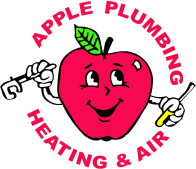It almost goes without saying, we need water to live. Depending on the situation, a person can die from dehydration in a matter of hours, days at the most. I believe that, next to air, water is our most basic need. So it stands to reason that the water we drink needs to be clean, free of harmful chemicals and bacteria, and taste good. To that end, you should be certain your water quality is suitable for healthy consumption and cooking.
If you have municipal water, the quality of your water is regulated by the EPA-Safe Drinking Water Act (SWDA) . Created in 1974, it sets the standards for water quality for public consumption. So, if you have City Water, it is pretty safe to assume that it is suitable for human consumption.
Since this is Hump Day Pump Day, and we have been talking about wells, how do you know that the water you are pumping out of the ground is safe for your consumption? The short and probably smart-alecky answer is that if you aren’t getting sick, it’s probably okay to drink! Yes and no. I have seen wells that have bacteria in them and the residents are drinking the water with no ill effects. Yet, once they see there are bacteria in the water, they immediately take steps to get rid of it. Generally, two bacteria tests are performed on wells: E. coli and Total Coliform. E. coli is always bad… it’s an indicator of fecal matter in the well. Total Coliforms include bacteria that are found in the soil, in water that has been influenced by surface water and in human or animal waste. Total coliform counts give a general indication of the sanitary condition of a water supply. In a well, a Total Coliform reading indicates ground water is getting into the well. The New York State Health Department has a great web page explaining BACTERIA IN DRINKING WATER; far better than I can do.
Here in Carroll County we see a fair number of wells with Nitrates. This is a result of ours being a farming county with an abundance of fertilizers having been used in the past. The EPA has set the Maximum Content Level (MCL) of Nitrates to be 10 ppm (parts per million). So, you can have a Nitrate level of 4 ppm and your water is safe or a level of 14 ppm and not meet EPA standards. See what I mean by yes and no?
There is also this thing called Turbidity. Again, the EPA does a nice job explaining TURBIDITY. To me, Turbidity is like Entropy- I know what it is, but have a hard time explaining it.
So, is your well contaminated with bacteria or nitrates… or both? Is the Turbidity a reason for concern? Only one way to find out: Have Your Water Tested. Two ways to have this done: 1. Call your local health department. In Carroll County, the health department will take a sample and test your water… for a fee. 2. Call a health department certified testing lab. We use FOUNTAIN VALLEY ANALYTICAL LAB. Their prices are very reasonable and the staff very helpful.
How often should you have your well water tested? The EPA recommends annually. That’s a good idea.
Bacteria and Nitrates aren’t the only substances that can contaminate a well. A good source to find out what else can be out there is EPA-Current Drinking Water Regulations.
Next week let’s look water quality that isn’t necessarily harmful to your health, but can wreak havoc with your plumbing system.
Same Day Emergency Service available! Call us at 410-840-8118 or fill in the form.






